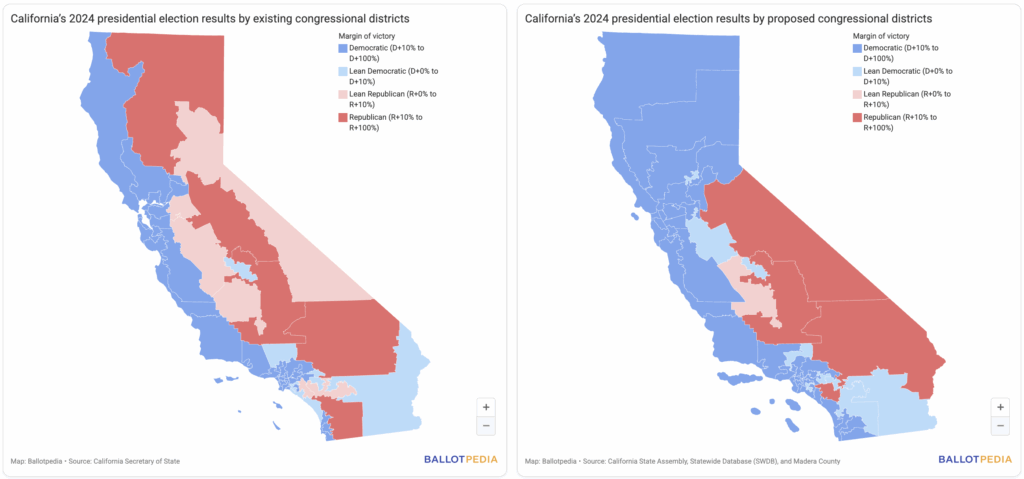As California heads toward a pivotal special election on November 4, all eyes are on Proposition 50—a controversial ballot measure that could upend the state’s approach to drawing congressional districts. With national political heavyweights weighing in and millions pouring into campaign coffers, Prop 50 has become a flashpoint in the ongoing war over who controls America’s electoral maps.
What Is Prop 50 and Why Now?
Proposition 50, officially dubbed the
Election Rigging Response Act, would temporarily suspend California’s independent redistricting commission and hand the power to draw congressional districts back to the state legislature for the 2026, 2028, and 2030 elections. The move is a direct response to Texas’s recent mid-decade redistricting, which was widely seen as a Republican gerrymander engineered to boost GOP representation in Congress.
Governor Gavin Newsom, the architect of Prop 50, argues that California must “level the playing field” after Texas’s aggressive redistricting, which he claims was encouraged by former President Donald Trump. Newsom and his allies say Prop 50 is a necessary counterpunch to protect democracy and ensure fair representation for Californians.
The Political Firestorm: Newsom vs. Trump
The campaign around Prop 50 has quickly escalated into a national spectacle, pitting Newsom and prominent Democrats—including Barack Obama, Kamala Harris, and Nancy Pelosi—against Trump and a chorus of Republican critics. Newsom has framed the measure as a stand against Trump’s efforts to “undermine the democratic process,” while Trump has vowed to challenge Prop 50 in federal court.
The rhetoric is fierce. Former Governor Arnold Schwarzenegger, a longtime advocate for independent redistricting, blasted Prop 50 as “insane,” arguing that it betrays the principle of nonpartisan map-drawing. Meanwhile, progressive icons like Alexandria Ocasio-Cortez have cut ads supporting the measure, insisting it “gives power back to the people”.
Who Stands to Gain—and Lose?
At its core, Prop 50 is about
partisan advantage. The new maps proposed under the measure would favor Democrats, potentially offsetting Republican gains in Texas and other states. Critics warn that this tit-for-tat approach could erode public trust in the electoral process and set a dangerous precedent for future redistricting battles.
Supporters, however, argue that California can’t afford to “unilaterally disarm” while other states manipulate their maps for partisan gain. Labor unions, including the powerful California AFL-CIO, have thrown their weight behind Prop 50, framing it as a defense of democracy itself.
The Voters’ Dilemma
A recent poll shows that
54% of California voters currently support Prop 50, with many buying into the Democratic argument that the measure is a necessary response to Republican gerrymandering elsewhere. Yet, the issue remains deeply polarizing, with sharp divides along party lines and growing concerns about the long-term impact on fair representation.
Some experts warn that suspending the independent commission could reduce transparency and public input, especially for communities of color and rural regions. Others note that the measure’s temporary nature—lasting only through the end of the decade—may limit its broader impact, but could still reshape the state’s congressional delegation for years to come.
What’s Next?
With early voting underway and millions already spent on both sides, Prop 50 is shaping up to be one of the most consequential—and contentious—ballot measures in recent California history. The outcome could reverberate far beyond the Golden State, influencing national debates over redistricting, partisanship, and the future of American democracy.
Key Takeaways:- Prop 50 would suspend California’s independent redistricting commission and let the legislature draw congressional maps through 2030.
- The measure is a direct response to Republican-led gerrymandering in Texas.
- Support and opposition break sharply along party lines, with high-profile national figures involved.
- The result could reshape California’s congressional delegation and set a precedent for other states.
As the November 4 special election approaches, Californians face a stark choice: double down on partisan redistricting to fight fire with fire, or defend the principle of independent, nonpartisan map-making—even if it means ceding ground to states playing by different rules.
Sources
1. 54% of Voters Buying What Dems are Selling on California Prop 50
2. 2025 California Proposition 50 - Wikipedia
3. Democrats drew Prop. 50 maps to gain seats, but are they actually less fair?
4. Latest News - SEIU 1021
5. How Would the Prop 50 Redistricting Plan Affect Racial and Geographic Representation?
6. Pod Save America podcast - Player FM
7. Voter turnout is low in this California region, but people are tuning in for the Newsom v. Trump showdown
8. america podcasts | Ivy.fm
9. California voters contemplate Prop 50 as the November special ...
10. Proposition 50 [Ballot] - Legislative Analyst's Office
